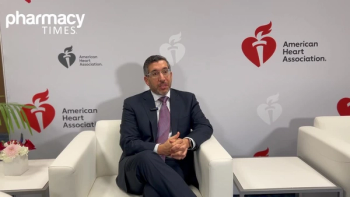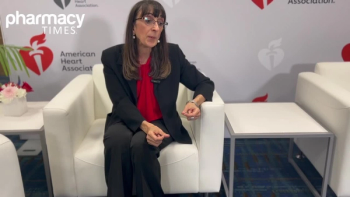
How the FDA Is Using AI to Monitor Drug Advertising and Ensure Compliance
FDA enhances oversight of drug ads using AI to ensure compliance, addressing risks and benefits in direct-to-consumer advertising.
In this Pharmacy Times interview, Edgar Asebey, Esq., discusses how the FDA is increasingly adopting artificial intelligence (AI) to strengthen oversight of direct-to-consumer pharmaceutical advertising across television, social media, and digital platforms. He explains that while companies are not required to submit ad materials prior to launch, the agency must still monitor thousands of campaigns from pharmaceutical firms, telehealth platforms, and compounding pharmacies, creating significant challenges for compliance review. According to Asebey, AI enables the FDA to quickly flag potential violations of the Food, Drug, and Cosmetic Act, detect misleading or unbalanced presentations of risks and benefits, and bring issues to regulators’ attention more efficiently—highlighting AI’s growing role in public health, enforcement, and patient protection.
Pharmacy Times: The FDA recently announced its most sweeping crackdown on direct-to-consumer (DTC) prescription drug advertising in decades. Can you break down what this rule change really means for pharmaceutical companies, advertisers, and ultimately, patients?
Edgar Asebey, Esq.: Sure, so the recent crackdown by the FDA with regard to direct-to-consumer advertising of prescription drugs really is the latest installment in what's been around since 1997, when the new rule came online and permitted pharmaceutical companies to advertise directly to consumers. This is very rare. The United States is one of only two countries, the other one being New Zealand, that permits this.
The previous theory was that you needed the learned intermediary to help interpret the risks and benefits of pharmaceutical products to patients. But that changed in 1997, largely from heavy lobbying by pharmaceutical companies that wanted to directly speak to consumers and patients. And so the rule came around where that was made possible.
The biggest hurdle at that time was the presentation of a balanced view of risks and benefits to consumers. Oftentimes, as you see in pharmaceutical advertising, at the end they have someone speaking very quickly, or at the very end of the advertisement there’s all this language, the fine print, etc. That is to fulfill the requirement that you have to present both the risks and the benefits.
The current administration and FDA Commissioner McCarty believe that balance has gotten away from what was intended. Therefore, this enforcement action we are seeing—over 100 warning letters and supposedly up to 1000 untitled letters being issued—really shows a commitment by this administration and this FDA to make this a priority, to bring balance back to what was intended from the very beginning: balanced information to the consumer.
So we begin in 1997; final rules are issued in 2023 that delineate the five requirements these advertisements are supposed to comply with. The truth is, enforcement has waned quite a bit over the years. After the 1997 rule came online, there was plenty of enforcement action, basically letting advertisers and pharmaceutical companies know that they were not in compliance.
A warning letter is essentially an FDA statement to a sponsor or a pharmaceutical company, in this case, letting them know that they are not in compliance with the Food, Drug, and Cosmetics Act. That company has 15 days to respond with a corrective action plan that they then inform the FDA about, and that corrective action plan can take weeks or months. It doesn’t have to mean full compliance within 15 days, but you must engage with the FDA to correct those alleged deficiencies.
That is where pharmaceutical companies find themselves now: in that 15-day period whereby they need to make adjustments. It isn’t that the FDA is shutting them down or taking any drastic action of that sort, but it is a very serious communication from the FDA, which regulates all pharmaceutical companies, that in its view they are not in compliance with the Food, Drug, and Cosmetics Act, and specifically with the rules for direct-to-consumer advertising.
Pharmacy Times: The FDA has signaled it will increasingly rely on AI to monitor drug advertising. What role will AI play in surveillance, and how might this impact how quickly the FDA identifies and acts on misleading ads?
Edgar Asebey, Esq.: Well, like every other industry, AI is now being adopted by the FDA. It’s being used by law firms, by major corporations, and it’s changing the way we work. It’s making certain things very efficient. One of the roles of the FDA is not just enforcement, but also oversight. You don’t have to wait for a company to have a major violation to intervene—you should be overseeing what is happening so it doesn’t get to that point.
For example, with direct-to-consumer pharmaceutical advertising, it is voluntary whether a pharmaceutical company sends the FDA its materials prior to launching an advertising campaign. They are not required to do so before launch. They have to submit materials once the advertising has initiated, but pre-submission is voluntary. Many pharmaceutical companies that invest significant money into advertising campaigns do choose to submit their materials ahead of time. They want to make sure they have FDA’s approval. Still, monitoring thousands of advertisements is a huge challenge.
And it’s not just pharmaceutical companies under scrutiny. As we saw in the recent wave of warning and untitled letters, there are also online telehealth initiatives and compounding pharmacies. For instance, during the Super Bowl, Hims and Hers advertised—this is a telehealth platform that includes compounding and marketing. So the scope is much broader than just traditional pharma, and the FDA needs to efficiently monitor what is being put out to consumers.
AI is a great tool for this. It can detect issues at scale. Another important point is that advertising is no longer confined to television. When I was a kid, my dad was a doctor, and I would flip through his medical journals. There would be eight pages of pharmaceutical advertising, six of which were filled with adverse effects and scientific data. You can’t fit that into a 30-second advertisement on TV. Instead, you get disclaimers at the bottom of the screen or the fast-talking narrator listing side effects.
The point is that AI can help detect noncompliance in advertising because advertising today isn’t just in journals or on TV. It’s on social media and across all modern communication platforms. That has made oversight a real challenge for the FDA. There are countless ads running on paid social media, influencer campaigns, and other digital channels, and it’s impossible to keep up using traditional review methods.
AI provides a tool to analyze these ads without requiring a human to manually review each one. It can flag certain statements or claims that may be noncompliant and bring them to the FDA’s attention. I think it’s a powerful tool for enforcement and for detecting potential noncompliance with the Food, Drug, and Cosmetics Act.
Newsletter
Stay informed on drug updates, treatment guidelines, and pharmacy practice trends—subscribe to Pharmacy Times for weekly clinical insights.















































































































































































































